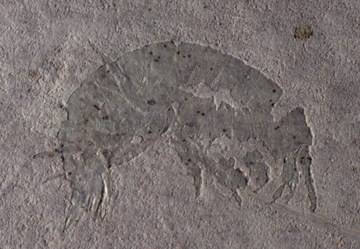Abstract
A new genus and species of the extinct lacewing family Mesochrysopidae, Burmotachinymphes bilobata gen. et sp. nov., is described from the mid-Cretaceous of northern Myanmar. This new genus can be easily distinguished from most known mesochrysopids by the RP+MA diverged from RA at an angle of >30° and strongly zigzagged along entire stem, and by the pectinate branches of MP2. Systematic position of Burmotachinymphes gen. nov. and the potential function of its unique pretarsal structure, i.e., the bilobed arolium with a pair of claw-like processes, are discussed. Additionally, a checklist of known mesochrysopid species and a revised diagnosis of Tachinymphinae are provided.
References
Adams, P.A. (1996) Venational homologies and nomenclature in Chrysopidae, with comments on the Myrmeleontoidea. In: M. Canard, H. Aspöck & M.W. Mansell (Eds), Pure and applied research in neuropterology. Proceedings of the Fifth International Symposium on Neuropterology, Cairo, pp. 19–30. Privately printed, Toulouse, France.
Breitkreuz, L.C., Winterton, S.L. & Engel, M.S. (2017) Wing tracheation in Chrysopidae and other Neuropterida (Insecta): A resolution of the confusion about vein fusion. American Museum Novitates, 3890, 1–44.
https://doi.org/10.1206/3890.1
Dai, Z.D., Gorb, S.N. & Schwarz, U. (2002) Roughness-dependent friction force of the tarsal claw system in the beetle Pachnoda marginata (Coleoptera, Scarabaeidae). Journal of Experimental Biology, 205 2479–2488.
Endlein, T. & Federle, W. (2008) Walking on smooth or rough ground: passive control of pretarsal attachment in ants. Journal of comparative physiology. A, Neuroethology, sensory, neural, and behavioral physiology, 194, 49–60.
https://doi.org/10.1007/s00359-007-0287-x
Engel, M.S., Winterton, S.L. & Breitkreuz, L.C. (2018) Phylogeny and evolution of Neuropterida: Where have wings of lace taken us? Annual Review of Entomology, 63, 531–551.
https://doi.org/10.1146/annurev-ento-020117-043127
Friedemann, K. & Beutel, R.G. (2014) Morphology of arolia in Auchenorrhyncha (Insecta, Hemiptera). Journal of Morphology, 275, 1217–1225.
https://doi.org/10.1002/jmor.20290
Gorb, S. (2001) Attachment devices of insect cuticle. Kluwer Academic Publishers, Dordrecht, 135 pp.
Grimaldi, D.A., Engel, M.S. & Nascimbene, P.C. (2002) Fossiliferous Cretaceous amber from Myanmar (Burma): its rediscovery, biotic diversity, and paleontological significance. American Museum Novitates, 3361, 1–71.
https://doi.org/10.1206/0003-0082(2002)361<0001:FCAFMB>2.0.CO;2
Hagen, H.A. (1862) Ueber die Neuropteren aus dem lithographischen Schiefer in Bayern. Palaeontographica, 10, 96–145.
Kania, I., Wang, B. & Szwedo, J. (2015) Dicranoptycha Osten Sacken, 1860 (Diptera, Limoniidae) from the earliest Cenomanian Burmese amber. Cretaceous Research, 52, 522–530.
https://doi.org/10.1016/j.cretres.2014.03.002
Khramov, A.V. & Nam, G.S. (2020) The first record of lacewings (Insecta: Neuroptera: Mesochrysopidae) from the Lower Cretaceous of South Korea. Paleontological Journal, 54, 613–616.
https://doi.org/10.1134/S003103012005007X
Kukalová-Peck, J. & Lawrence, J.F. (2004) Relationships among coleopteran suborders and major endoneopteran lineages: evidence from hind wing characters. European Journal of Entomology, 101, 95–144.
https://doi.org/10.14411/eje.2004.018
Liu, X.Y., Zhang, W.W., Winterton, S.L., Breitkreuz, L.C. & Engel, M.S. (2016) Early morphological specialization for insect-spider associations in Mesozoic lacewings. Current Biology, 26, 1590–1594.
https://doi.org/10.1016/j.cub.2016.04.039
Makarkin, V.N. & Menon, F. (2005) New species of the Mesochrysopidae (Insecta, Neuroptera) from the Crato Formation of Brazil (Lower Cretaceous), with taxonomic treatment of the family. Cretaceous Research, 26, 801–812.
https://doi.org/10.1016/j.cretres.2005.05.009
Martins-Neto, R.G. (1997) Neurópteros (Insecta, Planipennia) da Formação Santana (Cretáceo Inferior), Bacia do Araripe, nordeste do Brasil. X—Descrição de novos táxons (Chrysopidae, Babinskaiidae, Myrmeleontidae, Ascalaphidae e Psychopsidae). Revista Universidade de Guarulhos, Série Ciências Exatas e Technológicas, 2, 68–83.
Martins-Neto, R.G. & Rodrigues, V.Z. (2009) New Neuroptera (Insecta, Osmylidae and Mesochrysopidae) from the Santana Formation, Lower Cretaceous of northeast Brazil. Gaea—Journal of Geosciences, 5, 15–20.
https://doi.org/10.4013/gaea.2009.51.02
Menon, F. & Makarkin, V.N. (2008) New fossil lacewings and antlions (Insecta, Neuroptera) from Cretaceous Crato Formation of Brazil. Palaeontology, 51, 149–162.
https://doi.org/10.1111/j.1475-4983.2007.00740.x
Meunier, F. (1898) Les insectes des temps secondaires. Revue critique des fossiles du Musée paléontologique de Munich. Archives du Musée Teyler, (2) 6, 85–149.
Nel, A., Delclòs, X. & Hutin, A. (2005) Mesozoic chrysopid-like Planippenia: a phylogenetic approach (Insecta: Neuroptera). Annales de la Société Entomologique de France, (N.S.), 41, 29–68.
https://doi.org/10.1080/00379271.2005.10697440
Nel, A. & Henrotay, M. (1994) Les Chrysopidae mésozoïques. État actuel des connaissances. Description d’un nouveau genre et nouvelle espèce dans le Jurassique inférieur (Lias) (Insecta: Neuroptera). Annales de la Société Entomologique de France, (N.S.), 30, 293–318.
Orivel, J., Malherbe, M.C. & Dejean, A. (2001) Relationships between pretarsus morphology and arboreal life in ponerine ants of the genus Pachycondyla (Formicidae: Ponerinae). Annals of the Entomological Society of America, 94, 449–456.
https://doi.org/10.1603/0013-8746(2001)094[0449:RBPMAA]2.0.CO;2
Panfilov, D.V. (1980) New representatives of lacewings (Neuroptera) from the Jurassic of Karatau. In: Dolin, V.G., Panfilov, D.V., Ponomarenko, A.G. & Pritykina, L.N. Fossil insects of the Mesozoic. Naukova Dumka, Kiev, 82–111 [In Russian].
Ponomarenko, A.G. (1992) Neuroptera (Insecta) from the Lower Cretaceous of Transbaikalia. Paleontologicheskii Zhurnal, 1992, 43–50 [In Russian].
Ren, D., Lu, L.W., Guo, Z.G. & Ji, S.A. (1995) Faunae and stratigraphy of Jurassic-Cretaceous in Beijing and the adjacent areas. Seismic Publishing House, Beijing, 223 pp. [In Chinese with English summary].
Ren, D., Makarkin, V.N. & Yang, Q. (2010) A new fossil genus of Mesochrysopidae (Neuroptera) from the Early Cretaceous Yixian Formation of China. Zootaxa, 2523 (1), 50–56.
https://doi.org/10.11646/zootaxa.2523.1.3
Ren, D. & Yin, J.C. (2002) A new genus and new species of lacewings in the Jurassic of China (Neuroptera: Myrmeleontoidea). Acta Zootaxonomica Sinica, 27, 269–273.
Shi, C.F., Winterton, S.L. & Ren, D. (2015) Phylogeny of split-footed lacewings (Neuroptera, Nymphidae), with descriptions of new Cretaceous fossil species from China. Cladistics, 31, 455–490.
https://doi.org/10.1111/cla.12104
Shi, G., Grimaldi, D.A., Harlow, G.E., Wang, J., Wang, J., Yang, M., Lei, W., Li, Q. & Li, X. (2012) Age constraint on Burmese amber based on U-Pb dating of zircons. Cretaceous Research, 37, 155–163.
https://doi.org/10.1016/j.cretres.2012.03.014
Slifer, E.H. (1950) Vulnerable areas on the surface of the tarsus and pretarsus of the grasshopper (Acrididae, Orthoptera); with special reference to the arolium. Annals of the Entomological Society of America, 43, 173–188.
https://doi.org/10.1093/aesa/43.2.173
Yang, Q., Makarkin, V.N. & Ren, D. (2012) New fossil Mesochrysopidae (Neuroptera) from the Mesozoic of China. Zootaxa, 3597 (1), 1–14.
https://doi.org/10.11646/zootaxa.3597.1.1
Zhang, J.F. (1991) A new family of Neuroptera (Insecta) from the Late Mesozoic of Shandong, China. Science in China, (B), 34, 1105–1111.


